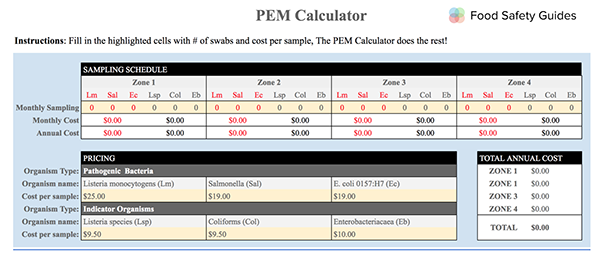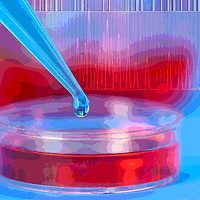With U.S. Food and Drug Administration (FDA) regulations, Global Food Safety Initiative-benchmarked schemes, and customers demanding microbiological and chemical testing on foods and surfaces, the demand for high quality, reliable laboratory services is surging. Yet not all labs are the same, so how do you determine which lab is best for your business? Here are five tips to get you started.
Tip #1: Use an Accredited Laboratory
The ISO standard used by food laboratories providing testing and/or calibration services is ISO/IEC 17025:2017 (just recently was updated from ISO/IEC 17025:2005). Ask prospective laboratories if they are accredited to this standard. You can learn more about the standard on the ISO website and on the websites of the accreditation bodies that accredit the laboratories, such as A2LA and ANAB. (These websites of the accreditation bodies are also useful to search a specific lab’s accreditation status and scope, such as when their accreditation expires.)
ISO accreditation is one way businesses provide assurance to other businesses (and reassure themselves) that they are operating in accordance with a globally recognized standard, are competent and reliable. But accreditation does not a guarantee that all entities accredited under the same standard are equal. Some recommend ISO accreditation as a minimum standard, a starting point. I see it as one more important puzzle piece in evaluating a lab’s fit for your business.
Tip #2: Seek Recommendations from Peers
If you want to know details about the day-to-day realities of working with a food lab, talk to your peers. Word tends to get around if a lab engages in shady practices, is difficult to work with, or repeatedly fails to deliver on its services. Of course, if a colleague says, “You should use this lab, they’re so cheap and turnaround is so fast!”, you should question why samples are so cheap and so fast. You should also factor into your analysis the colleague’s knowledge, experience, and overall credibility.
When reaching out to colleagues, here are a few questions you should ask:
• How long have you been working with Lab X?
• How did you start working with them?
• Have you used other labs?
• Why do you prefer Lab X over the others?
• How responsive is Lab X to urgent questions/requests?
• Does Lab X deliver on its stated turnaround time?
• Do you know anyone else that is using Lab X?
In summary, seek recommendations, but take them with a grain of salt.
Tip #3: Know Your Needs
Food labs geared toward large-scale businesses with experienced, on-staff microbiologists generally assume you know what you are looking for, are familiar with lab lingo, and make less effort to explain results. The result: a more transactional relationship, which is great if you’re a food microbiologist. If you’re not, you may be surprised by how cryptic lab communications can be. Ask colleagues if the lab they use communicates effectively in laymen terms. I also recommend pinning down the services you need before contacting the laboratory.
Need help figuring out what services you need? Contact a university’s Extension specialist or hire a consultant prior to contacting the lab to identify which pathogens/indicator organisms you will want to test for, how frequently you will test, sample specifications, acceptable vs. actionable test results, etc. University Extension programs exist to support industry and provide answers to hundreds if not thousands of food businesses across the U.S. Extension programs are generally more affordable than consultants, but consultants can be well worth the money. Choose the solution that makes most sense for your business.
Tip #4: Set a Budget
Just like any operational or capital expense, sampling and testing will have an impact on your company’s bottom line. This brings us to Tip #4: Factor costs associated with sampling and laboratory services into your business plan and create a budget.
 Estimates can be made quickly and easily with the Food Safety Guides free PEM Calculator (Figure 1). Simply input the number of swabs you plan on testing for each applicable pathogen/indicator organism, enter the fees charged by your prospective laboratory for each test, and the PEM Calculator handles the rest!
Estimates can be made quickly and easily with the Food Safety Guides free PEM Calculator (Figure 1). Simply input the number of swabs you plan on testing for each applicable pathogen/indicator organism, enter the fees charged by your prospective laboratory for each test, and the PEM Calculator handles the rest!
Be aware that in addition to the cost of materials (e.g., swabs) and shipping costs (swabs submitted to a laboratory are generally shipped overnight), additional costs could result from:
• Follow-up testing to confirm a presumptive positive (labs have a rate for this)
• Multiplication of follow-up testing in response to a presumptive positive found in a composite swab, which is a single swab used to collect samples from multiple swab sites
• Multiplication of follow-up testing beyond an original swab site(s) to locate the source of a confirmed positive (this can be a very expensive and frightening goose chase)
Composite sampling can be cost-effective if performed strategically (typically low risk surfaces, such as zones 3 and 4) and in tandem with robust sanitation program, Good Manufacturing Practices, etc. But if the swab returns a positive result, it is impossible to know the exact swab site(s) where the pathogen/indicator organism was detected. To locate the source of the positive, each swab site would need to be sampled individually, multiplying the cost.
Be prepared to spend money and know that your sampling strategy (e.g., composite vs individual site sampling) and the health of your food safety system will have a significant impact on cost. The goal of sampling and testing should always be to detect a positive, if a positive exists. Avoiding vulnerable swabs sites, foods/ingredients, or testing methods does not save money, but increases liability and in the long run can be substantially more expensive, not to mention harmful to public health and a company’s brand and bottom line.
Tip #5: Have a Recall Plan before You Test
As indicated in Tip #4, detecting a positive in one’s processing environment or in a food can result in serious costs, not to mention a public health emergency, a recall, and anxiety about the survival of one’s business. For example, a positive for Listeria spp. on a nonfood contact surface could lead to discovering a systemic problem involving Listeria monocytogenes on food (this just happened to someone I know). Similarly, a false positive could send your team through loops about what actions need to be taken and when. Should you report the positive to FDA right away? Tell your customers? Or do you wait for confirmation from the lab? If confirmed positive, can you tell which product was affected? Do you have practices, processes and/or records that can pinpoint which products were (and were not) potentially affected by the incident? How do you communicate to customers and the public that only certain products were affected and not others? These are only a small sampling (no pun intended) of the dozens are hard questions you could face after detecting a positive.
A team should know exactly what course of action to take in the event of a “presumptive positive” (i.e., an initial positive test result before it is confirmed to be positive through follow up testing). Conducting pathogen testing (particularly on foods and food contact surfaces) without having a recall plan in place is like stumbling through a mine field.
.png) The diagram from FDA’s Draft Guidance for Industry “Control of Listeria monocytogenes in Ready-To-Eat Foods,” (Figure 2) provides a glimpse into the kind of follow up FDA expects when testing food contact surfaces (FCS) for Listeria spp. I recommend having a flow diagram for every potential scenario and familiarizing yourself with local, state and federal requirements regarding recalls. Contact your regional FDA recall and state recall coordinators, take a class, and talk to a university Extension specialist or consultant. Someday, you may be grateful you did.
The diagram from FDA’s Draft Guidance for Industry “Control of Listeria monocytogenes in Ready-To-Eat Foods,” (Figure 2) provides a glimpse into the kind of follow up FDA expects when testing food contact surfaces (FCS) for Listeria spp. I recommend having a flow diagram for every potential scenario and familiarizing yourself with local, state and federal requirements regarding recalls. Contact your regional FDA recall and state recall coordinators, take a class, and talk to a university Extension specialist or consultant. Someday, you may be grateful you did.
Conclusion
Do your due diligence and remember: Working with a laboratory is an investment and like all things in life, planning ahead can save you a world of headache. Testing plays a vital role in food safety systems by revealing things we cannot see and, at times, telling us things we may have never wanted to hear. The path forward requires that we do our best, be honest with ourselves, to our customers and consumers, and that the laboratory we choose to work with reflect those commitments.
Charlie Kalish is managing member of Food Safety Guides, a progressive food safety and quality systems consulting firm that specializes in FSMA compliance, HACCP, third-party audit preparation and food safety and quality plan development. He is also senior director for food safety at UC San Diego Extension and a Food Safety Preventive Controls Alliance Lead Instructor for human and animal food.




